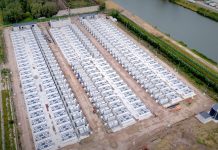 The UK energy market is on the cusp of major structural change and the majority of businesses will need to consider how and when they use power or face spiralling costs. Remaining a ‘dumb’ consumer of power in an age of smart grids could prove costly, warns Smart Grid Consultancy director Gary Swandells.
The UK energy market is on the cusp of major structural change and the majority of businesses will need to consider how and when they use power or face spiralling costs. Remaining a ‘dumb’ consumer of power in an age of smart grids could prove costly, warns Smart Grid Consultancy director Gary Swandells.
Rewriting the power system rules
The Scottish Power Energy Networks bid, dubbed Project Evolution, is one of a number of smart grid projects vying for support from Ofgem’s Network Innovation Competition. The programme is designed to enable distribution companies to experiment with new technology in order to reduce the cost of grid reinforcement and to enable a more responsive energy system in which households and businesses play an active rather than passive consumer role. If it receives funding, Scottish Power Energy Networks will be looking for businesses to take part in the trial.
Effectively, what the project sets out to do is “sweep aside the existing market rules” and put the distribution company in charge, says Swandells.
While the project is much broader than demand side response (DSR), he uses DSR as an example.
“So instead of having a bilateral contract between National Grid and a Short Term Operating Reserve provider, National Grid would make objective requests of the DSO and the DSO would decide what to turn on or off, up or down on the system,” Swandells explains.
“There is a major hangover from the fact that we have a centralised system yet more of the generation is connected at distribution level. There are also other active components going in at distribution level, which means we need to move to more distributed control as well,” says Swandells.
Local versus national
The trial would therefore attempt to rebuild a market fit for decentralised generation and control, he explains. The way the market currently operates, he says, creates conflict between local and national operations. Whereas National Grid may turn down a windfarm to balance the system, for example, a distribution network operator (DNO) may attempt to turn it back up again, or bring another generator online. That makes “no sense whatsoever”, says Swandells.
“As the volumes expand and the topology of the network changes and we start to see more generation connected on the distribution network, the whole theory of keeping centralised control over more distributed assets makes absolutely no sense whatsoever,” he says.
“So in my view, DSR will just become an additional tool that integrates into DSOs. Ultimately you will have smaller markets around the UK all feeding back and trying to balance themselves based upon better granularity of information locally,” Swandells continues. “If each of them is actively managing the local network points, then the job for National Grid should be dramatically reduced. Ultimately the majority of [balancing] should be done locally with National Grid having overall market responsibility.”
Businesses: Play in the market or pay the price
What smart grids will mean for consumers is that they have to engage in the local energy market and be prepared to be flexible in the way they use power or pay the price, Swandells says.
While currently only around 100,000 organisations in the UK are metered and settled on a half-hourly basis, slowly but surely more businesses are being migrated to half hourly settlement. That will bring them more fully into the realms of time-based prices and penalties.
Simultaneously, changes to the way energy companies are incentivised to balance demand and supply will likely make energy prices more volatile, thereby sharpening the market signals for businesses to use energy when it is cheap and reduce use when it is expensive.
Increasing amounts of inflexible power coming onto the system will likely exacerbate price volatility and increase conflicting signals at a national versus local level.
All of which compounds the need for businesses to take an active role as energy users, says Swandells.
The majority report
“[The energy market] will shift from the minority being involved to the majority being involved. If it is a market structure change, you become part of that market whether voluntarily or involuntarily,” he warns. “If you just want to remain a dumb consumer, you will be foregoing a significant opportunity either mitigating cost or generating revenue.”
National Grid’s Power Responsive announcement, whereby the system operator proposed using demand side response for up to half of balancing services within the next five years, suggests that shift is already underway, says Swandells.
However, he questions “whether you can leave it up to National Grid, talking about those types of volumes”.
“If the networks are to be left dumb and National Grid wants that amount of flexibility, the networks would have to be reinforced at massive cost” in order to enable mass flexibility without localised constraint data, warns Swandells.
“The DNOs are the only ones with a view of the constraints on their network and they need to operate what is connected to it within those constraints.”
Related articles:
National Grid launches major demand side push
National Grid ‘delighted’ with demand response but warns over winter tightness
National Grid urges major energy users to provide demand response for winter peak, may pay more
Decc remains ‘confident’ of beating Tempus Energy’s demand-side legal challenge
UK firms with CHP facilities could be paid to stop exporting power
National grid urges big firms to offer demand side response, may pay more
Intelligent district heating grid
Click here to see if you qualify for a free subscription to the print magazine, or to renew.
Follow us at @EnergystMedia. For regular bulletins, sign up for the free newsletter.



